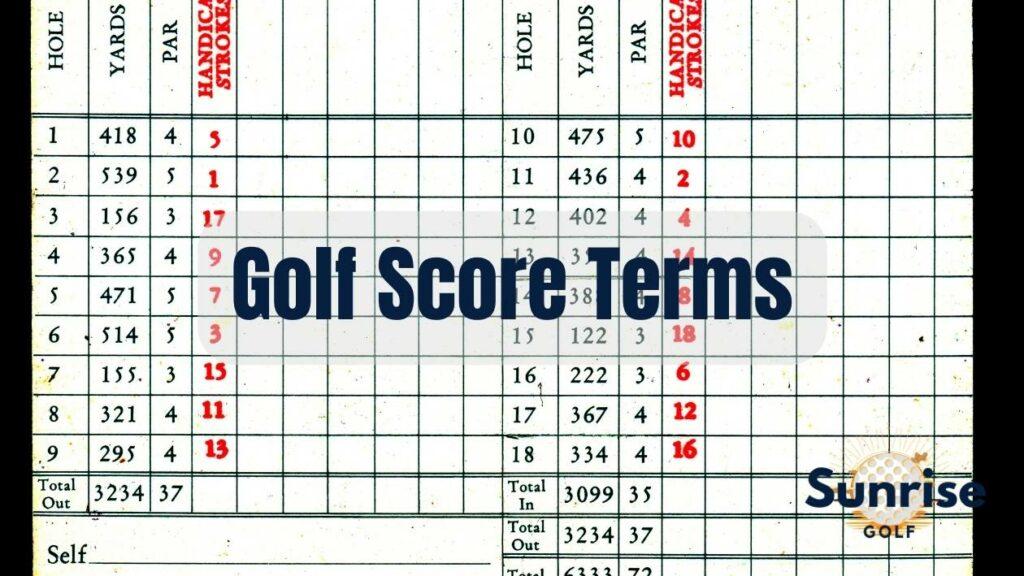Golf is a challenging game that requires a high level of skill and precision. One of the most important aspects of golf is scoring. A low golf score is essential for success, and it requires a deep understanding of the game’s mechanics and strategies.
This article will provide an in-depth look at the mechanics and mastery of golf scoring. We will discuss the different factors that affect scoring, such as course layout, shot selection, and putting. We will also provide strategies for improving your golf score, including tips on how to hit the ball longer and straighter, putt better, and manage your game more effectively.
By following the advice in this article, you will be well on your way to lowering your golf score and improving your overall game.
The Intricacies of Gross and Net Scores: An Examination of Course Features and Individual Skill
Golf scoring involves the calculation of gross and net scores. Gross score is the total number of strokes taken during a round of golf, including any penalties incurred. Net score is the gross score minus any deductions for handicaps. Course characteristics and individual skill levels significantly impact golf scoring outcomes.
Course characteristics that influence scoring include layout, length, hazards, and green complexity. For example, a course with narrow fairways, numerous bunkers, and fast greens will present greater challenges to golfers and potentially lead to higher scores. Conversely, a course with wide fairways, few hazards, and slower greens will be more forgiving and may facilitate lower scores. Additionally, the length of the course affects scoring, as longer courses require more accurate shots and place a greater demand on physical endurance.
Individual skill levels also play a crucial role in golf scoring. Golfers with stronger ball-striking ability, putting prowess, and course management skills tend to score lower than those with less developed skills. Factors such as swing consistency, distance control, and the ability to recover from errant shots all contribute to scoring performance. Understanding one’s strengths and weaknesses and developing a game plan that capitalizes on strengths while mitigating weaknesses is essential for effective scoring.
Scoring Strategies: Exploring Course Management and Shot Selection
Effective golf scoring hinges upon not simply hitting great shots, but also on understanding the course layout and making smart shot selections. Course management involves recognizing hazards and obstacles, and planning your shots accordingly. This includes considering:
Playing to your strengths: Identify the types of shots you excel at and utilize those strengths to avoid potential pitfalls.
Avoiding trouble: Assess the distances to hazards and make strategic decisions to avoid landing in these areas.
Risk-reward analysis: Weigh the potential benefits and risks of more aggressive shots versus safer options.
Shot selection is closely intertwined with course management. The right shot selection can significantly impact your score:
Club selection: Choose the club that provides the necessary distance and accuracy for the shot.
Trajectories: Consider the angle of the shot and the desired trajectory to navigate obstacles and reach the desired landing spot.
Spin control: Utilize clubs that produce optimal spin to enhance shot control and shaping.
By mastering course management and shot selection, you gain the ability to navigate the course effectively and make informed decisions that minimize your score.
Statistical Analysis and Interpretation: Understanding Scoring Patterns and Performance Variability
Statistical analysis plays a pivotal role in understanding golf scoring patterns and enhancing performance. By analyzing historical scores, golfers can identify trends, strengths, and weaknesses in their game. Data analysis techniques such as descriptive statistics, correlation analysis, and regression models can be used to:
- Quantify scoring averages, dispersion, and variability for different rounds, courses, and conditions.
- Identify correlations between factors such as shot selection, distance control, and putting accuracy to determine their impact on scoring.
- Develop predictive models that can estimate expected scores based on course characteristics, weather conditions, and golfer skill level.
Understanding these patterns enables golfers to make informed decisions, adjust their strategies accordingly, and set realistic scoring goals. For instance, a golfer may discover that their scores tend to suffer on courses with tight fairways and large greens. This insight can lead to adjusting their club selection or prioritizing accuracy over distance.
Example Table:
| Golf Course | Average Score | Scoring Dispersion |
|—|—|—|
| Oakmont Country Club | 74.5 | ± 6.2 |
| Augusta National Golf Club | 72.1 | ± 4.3 |
| Pebble Beach Golf Links | 73.4 | ± 5.1 |
Additionally, statistical analysis can help golfers track their progress over time and identify areas for improvement. By analyzing their scoring trends, shot distribution, and rounds with exceptional outcomes, golfers can isolate areas that are hindering their performance and focus on specific practice goals. This iterative process allows golfers to continually refine their game and strive for scoring excellence.
Practice Techniques: The Importance of Deliberate Repetition and Skill Acquisition Strategies
To achieve mastery in golf, deliberate practice that focuses on improving specific skills is essential. This involves breaking down complex movements into smaller, manageable chunks and practicing them repeatedly with a clear goal in mind. By engaging in focused, purposeful practice, golfers can enhance their muscle memory, refine their technique, and develop a consistent swing.
Moreover, incorporating feedback loops into practice sessions allows golfers to identify areas for improvement and make necessary adjustments. This can be achieved through self-assessment, coaching, or the use of technology such as video analysis. By receiving feedback on their performance, golfers can gain valuable insights into their technique and work on improving their accuracy and consistency.
Skill Acquisition Strategies
Chunking: Breaking down complex skills into smaller, manageable components for focused practice.
Repetition: Repeatedly practicing movements to develop muscle memory and enhance consistency.
Feedback loops: Using self-assessment, coaching, or technology to identify areas for improvement and make necessary adjustments.
Progressive overload: Gradually increasing the difficulty or intensity of practice to challenge oneself and promote skill development.
* Mental visualization: Creating a mental image of the desired outcome to improve focus and accuracy.
Mental Strategies: Cultivating Focus, Confidence, and Emotional Control for Optimal Scoring
Fine-tuning the mental aspect of golf is paramount for consistent scoring improvement. Focus is crucial; stay present and immersed in each shot, devoid of distractions. Commit to one shot at a time and resist dwelling on past errors or anticipating future challenges.
Confidence is pivotal for successful scoring. Believe in your abilities and maintain a positive self-image. Visualize yourself executing each shot effortlessly and trust in your preparation. Avoid negative self-talk and replace setbacks with lessons learned.
Emotional control is equally important. Manage expectations and accept that bogeys will occur. Stay calm and collected under pressure, focusing on the process rather than the outcome. Develop coping mechanisms for negative thoughts and emotions, such as positive affirmations or breathing exercises.
Conclusion
The complexities of golf scoring demand a deep understanding of mechanics and a mastery of strategic play. By employing refined techniques such as course management, shot shaping, and expert green reading, golfers can optimize their performance and consistently achieve exceptional results. Each shot carries the potential to influence the overall outcome, making calculated decision-making paramount. As players refine their mechanics and embrace the strategies outlined in this article, they will unlock their true potential and embark on a path toward golfing excellence.





